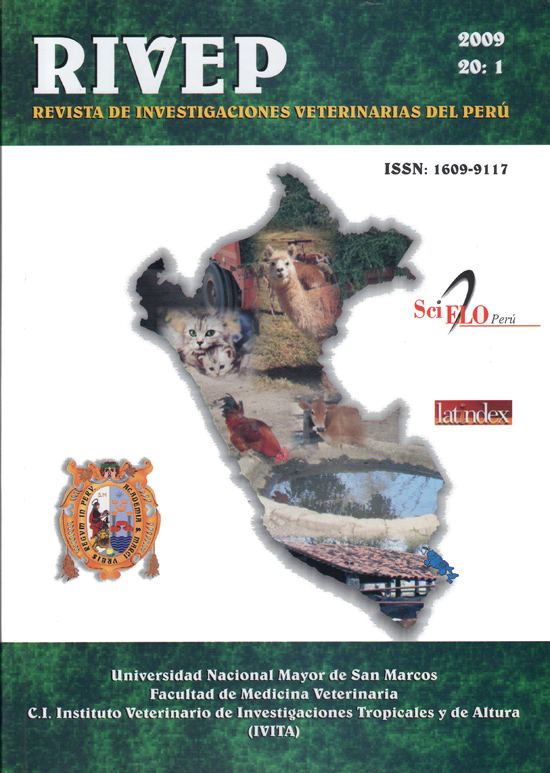EVALUATION OF IN VITRO FERTILITY OF SEMEN FROM YOUNG LOCAL BULLS IN OOCYTES FROM OVARIES OF SLAUGHTERED ANIMALS
DOI:
https://doi.org/10.15381/rivep.v20i1.527Keywords:
ovocytes, embryo, blastocyst, PercollAbstract
This study was carried out in the Center of Research and Instruction in Embryo Transfer (CIETE), sponsored by a partnership between the National Agrarian University of La Molina (UNALM) and the Ministry of Agriculture (MINAG), located at the UNALM campus. The objective was to evaluate the fertility and in vitro production of embryos of four bulls from the National Semen Bank. This study used 1031 oocytes of quality A and B obtained from ovaries of the local slaughterhouse. The oocytes were matured in the TCM-199 medium. The Percoll gradient centrifuge method was used for spermatic separation; sperm capacitation and fertilization was done in the TALP-IVF + PHE medium; and embryos were cultured with the Sofaa medium containing 5% Fetal Bovine Serum (FBS). Embryos were evaluated on days 7, 8, and 9 after fertilization. There were no statistical differences among the four bulls, and the fertilization rate was 63.3, 56.8, 68.8 and 72.9% for each bull. There was no statistical difference in the production of embryos between bulls. It is concluded that the bulls tested were in the normal range for in vitro embryo production.Downloads
Downloads
Published
Issue
Section
License
Copyright (c) 2009 Próspero Cabrera V., Washington Yoong K., Gicell Gamarra L.

This work is licensed under a Creative Commons Attribution-NonCommercial-ShareAlike 4.0 International License.
AUTHORS RETAIN THEIR RIGHTS:
a. Authors retain their trade mark rights and patent, and also on any process or procedure described in the article.
b. Authors retain their right to share, copy, distribute, perform and publicly communicate their article (eg, to place their article in an institutional repository or publish it in a book), with an acknowledgment of its initial publication in the Revista de Investigaciones Veterinarias del Perú (RIVEP).
c. Authors retain theirs right to make a subsequent publication of their work, to use the article or any part thereof (eg a compilation of his papers, lecture notes, thesis, or a book), always indicating the source of publication (the originator of the work, journal, volume, number and date).



